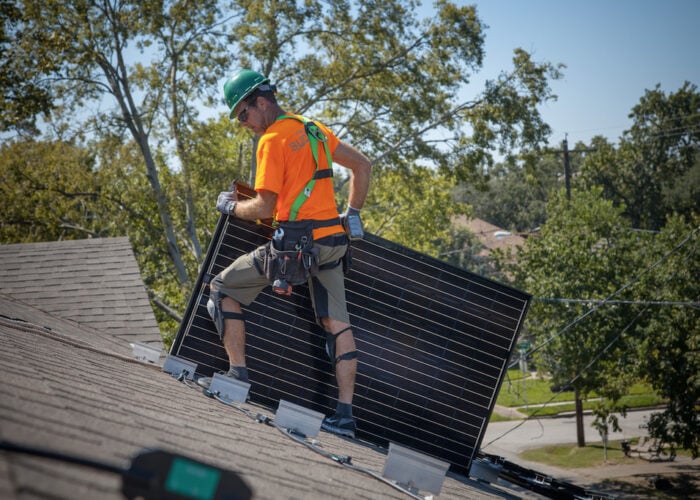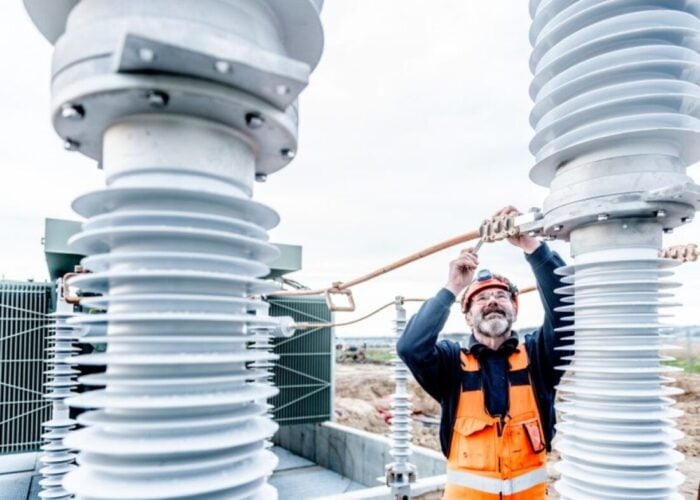How much carbon is emitted in producing a solar PV module and launching it on the market? This could be an important question which project developers, installers, investors, government agencies and end customers will ask solar PV manufacturers in the future. Producers need to know the direct emissions from the manufacturing process, as well as those generated from activities in the upstream supply chain (including raw material acquisition, upstream energy use, packaging, transportation and procurement), and also those arising from module usage and eventual recycling (see Figure 1).
Why should manufacturers disclose their carbon emissions?
Unlock unlimited access for 12 whole months of distinctive global analysis
Photovoltaics International is now included.
- Regular insight and analysis of the industry’s biggest developments
- In-depth interviews with the industry’s leading figures
- Unlimited digital access to the PV Tech Power journal catalogue
- Unlimited digital access to the Photovoltaics International journal catalogue
- Access to more than 1,000 technical papers
- Discounts on Solar Media’s portfolio of events, in-person and virtual
PV is seen by the general public as an environmentally friendly source of energy, but little attention is paid to the PV production process and its impact on the environment. Proactively pursuing environmentally sound production practices and voluntary disclosure of carbon emissions to stakeholders will lead to financial, economical and marketing benefits for manufacturers.
These benefits represent an improvement of competitive positioning through an unique selling point (USP) that helps to establish a premium brand, as well as an opportunity to differentiate products from those of competitors. Recent market research (see Figure 2) shows that solar PV project developers and installers consider carbon footprint information as a decisive buying argument (under conditions of similar price and technology offers).
An immediate financial incentive for companies is higher stock prices as a result from voluntary listing in the carbon disclosure project. Researchers at UC Berkeley have shown that voluntary disclosure leads to an average increase of stock prices of a near half percent, and even higher increases of two percent for smaller companies.
In the near future it may be also a cost-reducing measure: as carbon regulations are implemented across the globe, improving the carbon footprint can lead to a reduction in process costs.
Mandatory disclosures of carbon emissions are on the rise as well: several governments and regulatory institutions currently introduce low-carbon criteria in PV tendering procedures or building legislations. An example is a recent PV tender in France where carbon emissions represented 10–20% of the evaluation criteria in awarding public PV tenders of systems larger than 250kW.
Despite the basic design of this simplified carbon footprint calculation (e.g. major generalizations, no direct manufacturing emissions taken into account), manufacturers can expect an increasing number of requirements from governments to disclosure their carbon emissions.
For instance, anecdotal information indicates that the French institute ADEME is currently designing Environmental Product Declarations that are likely to affect the French BIPV market. France is a forerunner here, but in general, we can expect more carbon focused public procurement programs to be implemented in the EU as a whole.
Disclosing carbon emissions – a courtesy to the public?
Political support for FiT programs is also associated with disclosing carbon emissions, as the implementation of renewable energy laws has been driven by environmental issues as well. It is crucial to stress the point that there is an inherent interdependence between the public support of renewable energies and carbon emissions disclosure. Some of these interactions can be seen in Figure 3.
Gradually, the argument is prevailing that grid parity will at best reduce, but not fully remove, dependency on political support. This dependency will not be solved until PV is competitive with fossil fuels in relation to generation costs. Thus, from a medium-term perspective, PV market development will remain dependent on support mechanisms. Consequently, the positive environmental impact of PV is the main argument for further political financial support. From a politician’s point of view, it seems reasonable to require evidence regarding the carbon footprint of a subsidized product that is supposed to achieve environmental benefits.
Now is therefore the time for PV manufacturers to voluntarily disclose their carbon emissions. Those who do so can use the opportunity to position themselves as ‘thought leaders’ and gain considerable good will from end-customers, investors, policy makers and the public as a whole. Stakeholders will reward that transparency with increased sales, and higher stock prices.







